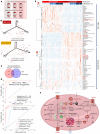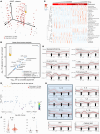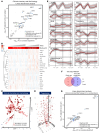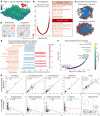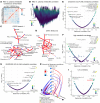Blood-storage duration affects hematological and metabolic profiles in patients with sickle cell disease receiving transfusions
- PMID: 40608427
- PMCID: PMC12404753
- DOI: 10.1172/JCI192920
Blood-storage duration affects hematological and metabolic profiles in patients with sickle cell disease receiving transfusions
Abstract
BACKGROUNDPatients with sickle cell disease (SCD) frequently receive RBC units stored near the end of their permissible storage duration. We aimed to determine whether RBC storage duration influences recipient hematological, metabolic, and clinical chemistry parameters.METHODSIn a randomized, prospective, double-blind trial, 24 adults with SCD receiving chronic transfusion therapy were assigned to receive three consecutive outpatient transfusions with RBCs stored for either ≤10 days (short-stored; n = 13) or ≥30 days (long-stored; n = 11). Blood samples were collected from transfused units and from recipients at predefined time points for metabolomics, cytokine, and clinical laboratory analyses. The primary outcomes included post-transfusion hemoglobin and RBC count increments, metabolic markers of oxidative stress, iron metabolism, inflammation, and renal function.RESULTSTransfusion of short-stored RBCs was associated with significantly higher circulating 2,3-bisphosphoglycerate levels for up to 2 weeks after transfusion. Nadir RBC counts and hemoglobin A levels were higher in recipients of short-stored RBCs. In contrast, recipients of long-stored RBCs had higher transferrin saturation and plasma iron levels, elevated markers of oxidative stress and renal dysfunction, and increased proinflammatory cytokines and immunomodulatory metabolites. Metabolomics revealed storage age-dependent alterations in glycolysis, purine, and sphingolipid metabolism. Cytokine profiles and hematologic parameters corroborated the metabolic findings, indicating improved post-transfusion metabolic and inflammatory status with short-stored RBCs.CONCLUSIONTransfusion of short-stored RBCs yielded favorable metabolic and hematologic outcomes in adults with SCD, independent of immediate clinical endpoints.TRIAL REGISTRATIONClinicalTrials.gov NCT03704922FUNDINGNational Heart, Lung, and Blood Institute (NHLBI), NIH (K23HL136787, R01HL148151, R01HL146442, and R01HL149714).
Keywords: Clinical Research; Clinical practice; Clinical trials; Hematology; Metabolomics.
Conflict of interest statement
Figures
